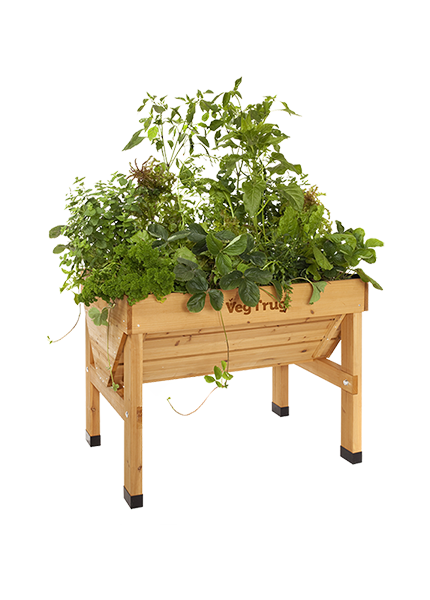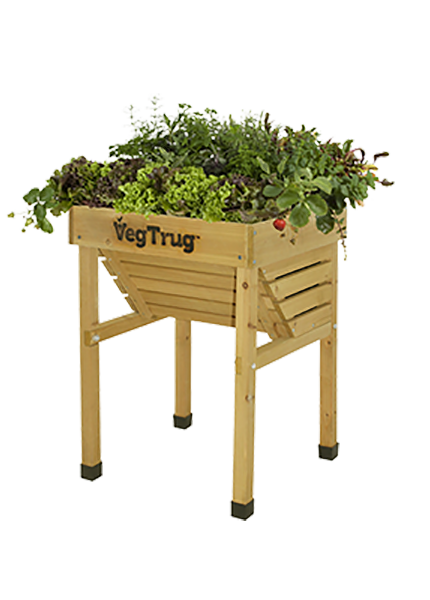From tea to potatoes, ice cream to a garnish for roasted lamb, mint comes in a range of varieties and is a favourite flavour across the world. It’s easy to grow from root cuttings and what’s more, mint attracts the insects that benefit your whole garden.
But you will need to keep an eye on those expanding roots. Read more on how to grow mint in our guide below.
You can sow mint from seeds but it’s so easy to grow that you might as well use a cutting from a root or plant. To start, plant small pieces of root 6cm deep and 15cm apart in late April early May or early September, in the UK. Choose well drained soil too because mint needs moist, not waterlogged soil.
The best way to plant mint is within a small bottomless container inside your VegTrug. This is because mint roots expand vigorously and will overrun everything else if given the chance. You should also make sure the top of the pot is above the soil, to stop shoots getting out over the top.
Finally, it’s best not to plant any different mint varieties too close to each other as they could easily lose their specific flavours. Top dress with compost in the autumn.
Mint grows fast, and to get the best from your plants thin them regularly. It can grow up to three feet tall in the right conditions. When you’re planning how to grow mint in your VegTrug, remember to keep the roots under control. Runners can even find their way through cracks in pots.
Mint likes sun in the morning and some shade during the afternoon and if you want to pick your mint for a long period, remove any flowering buds as soon as they appear. You should allow some plants to flower which will encourage pollination.
Mint can survive in light frosts and will even grow in climates that have warmer weather during the winter season. If your winters aren’t mild, then cut the stem to ground level and cover with mulch.
If you’re growing your mint in a VegTrug, then you should divide out the plants every three years and ensure there’s plenty of drainage - adding stones will do the trick. You can add a little plant food a couple of times throughout the season too. Don’t let your mint dry out.
You know how to grow mint properly, but like any herb mint can develop problems. Mint can get rust, a fungal infection which shows as small yellowish orange or black spots or blisters that form on the leaves. Rust can lead to the death of the whole plant. Small outbreaks can be dealt with by removing the affected leaves but if the outbreak is big, you should remove the entire plant and dispose of it. Don’t put it in with the compost as the infection can spread.
Mint also gets mint beetle, a small green beetle that feeds on mint plants. Its larvae are found as tiny black dots. Large quantities can overwhelm and kill plants but as mint grows so quickly you shouldn’t need to worry too much. Any beetles can be removed by hand.
Mint is at its best when fresh, although it can be chopped and added to water for freezing in ice-cube trays. Picking your mint often will help encourage new growth. Pick from late spring through to autumn and add to a dish as required.
How to grow mint is part of the VegTrug Grower’s Guide.

